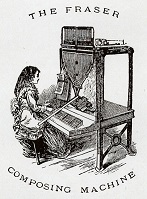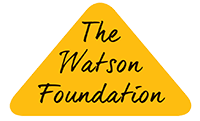Originally printing techniques were imported into Scotland from France, which is where Androw Myllar was trained. Usually apprentices were bound to a master for 7 years to learn the craft, after which they became journeymen. At this point it was common for a newly trained journeyman to move to a new office in search of work, and by the eighteenth century some out-of-work printers tramped round the country in search of work. Benefit societies (known as Typographical Societies) developed in larger towns to provide benefits to sick and out-of-work members, and also to provide a small sum to men tramping in search of work. These grew into the print trade unions.
The master printers also came together to discuss matters of interest and to deal with the local branch of the union.
World famous printer-publishers based in Scotland in the nineteenth and twentieth centuries include Bartholomews, Blackie, William Collins, MacLehose (one of the printers to Glasgow University) and Thomas Nelsons. A distinguished name from the eighteenth century is the Foulis Press of Glasgow, which produced beautifully typeset and carefully printed classical texts. Other important companies included postcard publishers and printer, Valentine, based in Dundee.
Some Scottish printers were responsible for technical innovations, for example:
- In the late eighteenth century William Ged invented the stereotyping process, although his attempts to exploit it commercially were a failure and left him embittered, the process has been widely used since.
- Thomas Nelson, son of the founder of Thomas Nelson & Sons, invented a rotary press: it was demonstrated at the Great Exhibition of 1855. As he did not patent his invention, he did not reap any financial benefit from an invention from which the newspaper presses in use for the next 100 years were descended. This press is now on show in the National Museum of Scotland
 Alexander Neill Fraser of the printing company Neill & Co, based in Edinburgh was an early pioneer of mechanical typesetting, inventing a machine for typesetting and distributing used type which predated the Monotype and Linotype systems. The machines were not only used in their own works, but were sold elsewhere well into the twentieth century.
Alexander Neill Fraser of the printing company Neill & Co, based in Edinburgh was an early pioneer of mechanical typesetting, inventing a machine for typesetting and distributing used type which predated the Monotype and Linotype systems. The machines were not only used in their own works, but were sold elsewhere well into the twentieth century.- Thomas Cossar, of the Govan firm of John Cossar Ltd, who developed the ‘Cossar Patent Flat Bed Web Newspaper Printing Machine’ based on the company’s Wharfedale press: and early model which was used to print the Strathearn Herald is now in the care of National Museums Scotland.
The Scottish Book Trade Index, hosted on the National Library of Scotland’s website, brings together directory entries for individuals active in the printing and the allied trades in Scotland before the mid-19th century.
 SPRAT is grateful for support from The Watson Foundation
SPRAT is grateful for support from The Watson Foundation